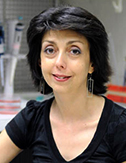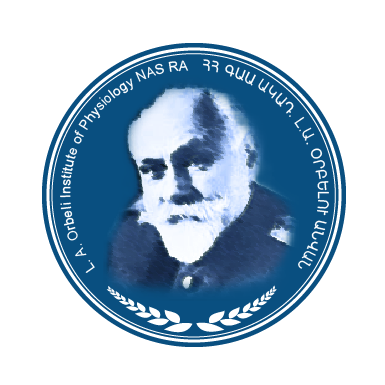- Home
- About us
- Laboratories
- Central Nervous System Physiology
- Central Nervous System functions compensation Physiology
- Immunology and Tissue Engineering
- Smooth Muscle Physiology
- Toxinology and Molecular Systematics
- Sensorimotor Integration
- Laboratory of Histochemistry and Morphology
- Human Psychophysiology
- Integrative Biology
- Purification, Certification and Standardization of Physiologically active substances
- Neuroendocrine Relationships
- Distance Լearning Center
- Laboratory of Hyperspectral Imaging of Surgical Targets
- Biophysics Lab
- News & Events
- Master's Program
- Research
- Councils
- Contact Us
- OIPH Docs
L. A. Orbeli Institute of
Physiology NAS RA
Laboratory of Immunology and Tissue Engineering

The Laboratory of Immunology and Tissue Engineering (LITE) currently conducts research in the field of regenerative medicine and drug discovery. The primary objective of tissue engineering (TE) is to develop organs and tissues in laboratory settings that can be used for novel treatment approaches. This includes the creation of biological implants that serve as safe, reliable, and readily available alternatives to organ transplantation, mitigating the risks of graft rejection and ethical concerns. LITE focuses specifically on the regeneration of skin, liver, aortic valve, and neural tissues. The laboratory is particularly interested in generating extracellular matrix substitutes (scaffolds) and living cells, including adult stem cells, capable of repopulating these scaffolds. LITE primarily employs decellularization-based methods due to the significant advantages they offer, such as the preservation of tissue architecture and bioactive agents. However, in certain cases, they combine this method with other tissue engineering approaches, such as 3D bioprinting, to maximize outcomes by leveraging the advantages of each approach. Additionally, LITE utilizes these techniques to develop engineered experimental models for drug testing and other applications. Importantly, LITE also prioritizes the immunological assessment of all engineered constructs and tissues to ensure the development of non-immunogenic tissue substitutes. Another research focus of LITE is the experimental evaluation of novel pharmaceuticals for the treatment of cancer and other diseases. In collaboration with FAST funded grants, LITE is working on advancing drug discovery through AI-driven screening and selection of the most promising small molecule candidates for cancer inhibition. The laboratory expertise in cell isolation, characterization, and compound testing using various techniques allows to assess selected candidate molecules in vitro. LITE is also actively engaged in teaching activities. The laboratory offers periodic hands-on courses in tissue engineering to foster interest among young scientists in this fascinating field. In addition, LITE members serve as trainers in the BIO-SEE program at the Orbeli Institute of Physiology aiming to educate researchers in bio-visualization techniques and promote their use to enhance the quality of research and resulting publications.
| Publications |
|---|
Avtandilyan N., Ginovyan M., Javrushyan H., Hovhannisyan S., Nadiryan E.,
Sevoyan G., Harutyunyan T., Gevorgyan S., Karabekian Z., Maloyan A. 5-fluorouracil
and Rumex obtusifolius extract combination trigger A549 cancer cell apoptosis:
uncovering PI3K/Akt inhibition by in vitro and in silico approaches. Sci Rep. 2024 Jun
25;14(1):14676. doi: 10.1038/s41598-024-65816-5.
Rstakyan V., Mkhitaryan L., Baghdasaryan L., Ghaltaghchyan T., Karabekian Z.,
Sevoyan G.; Aghayan M.; Miguel A. Rodríguez. Stereolithography of ceramic
scaffolds for bone tissue regeneration: Influence of hydroxyapatite/silica ratio on
mechanical properties SSRN Jan 4, 2024. Available at SSRN:
http://dx.doi.org/10.2139/ssrn.4668189
Arestakesyan H., LeFevre N., Posnack N., Sarian A., Grigorian V., Ayvazyan N.,
Voskanyan A., Sarvazyan N., Karabekian Z. Changes in attachment and metabolic
activity of rat neonatal cardiomyocytes and nonmyocytes caused by Macrovipera
lebetina obtusa venom. Toxicology In Vitro, available online December 8, 2023. DOI:
10.1016/j.tiv.2023.105755
Rstakyan V., Mkhitaryan L., Torosyan M., Karabekian Z., Sevoyan G., Aghayan M.,
Miguel A. Rodríguez. Manufacturing of Bioactive Biodegradable Scaffolds by
Stereolithography. Advances in Science and Technology, Volume 134; pg 3-12. DOI:
https://doi.org/10.4028/p-ilY5jt
Ginovyan M, Hovhannisyan S., Javrushyan H., Sevoyan G, Karabekian Z, Zakaryan
N, Sahakyan N., Avtandilyan N. Screening revealed the strong cytotoxic activity of
Alchemilla smirnovii and Hypericum alpestre ethanol extracts on different cancer cell
lines. AIMS Biophysics 2023, Volume 10, Issue 1: 12-22. doi:
10.3934/biophy.2023002
Moghrovyan A., Parseghyan L., Sevoyan G., Darbinyan A., Sahakyan N, Gaboyan
M, Karabekian Z, Voskanyan A. Antinociceptive, anti-inflammatory, and cytotoxic
properties of Origanum vulgare essential oil, rich with β-caryophyllene and β-
caryophyllene oxide. Korean J Pain. 2022 Apr 1;35(2):140-151.
Ayvazyan N., Ghukasyan G., Ghulikyan L., Kirakosyan G., Sevoyan G., Voskanyan
A., Karabekjan Z. The contribution of phospholipase A2 and metalloproteinases to
the synergistic action of viper venom on the bioenergetic profile of Vero cells. Toxins
(Basel), 2022 Oct 23;14(11):724
Karabekian. Z. Sarvazyan N. “Stem cells and basics of immunology”. Chapter 7.
Basics of Tissue engineering: Protocols and Practical Exercises. Edited by Narine
Sarvazyan. 2019. Springer publishing (English version in press) and Asoghik
Publishing house (Armenian version ISBN 978-9939-1-0991-6)
Darbinyan A.A, Antonyan M.V., Koshatashyan H.R., Gevorgyan S.S., Arestakesyan
H.V., Karabekian Z., N.M. Ayvazyan, A.V. Voskanyan. Changes in microglia activity
of rat brain induced by Macrovipera lebetina obtusa venom. Neuroimmunology and
Neuroinflamation 2018; 5:41.
H.V.Arestakesyan, Z.I.Karabekian. Adhesion properties of cardiomyocytes and
cardiac fibroblasts are affected by Macrovipera lebetina obtusa crude venom. Issues
in Theoretical and Clinical Medicine, Journal of Scientific and Practical Medicine,
2017, Volume 20, № 3 (113), p. 53-58.
Karabekian Z, Ding H, Stybayeva G, Ivanova I, Muselimyan N, Haque A, Toma I, Posnack N,
Revzin A, Leitenberg D, Laflamme M, Sarvazyan N. HLA class I depleted hESC as a source
of hypoimmunogenic cells for tissue engineering applications. Tissue Engineering Part A,
2015; Vol. 21.
Karabekian Z, Idrees S, Ding H, Jamshidi A, PosnackN, Sarvazyan N.
Downregulation of beta-microglobulin to diminish T-lymphocyte lysis of non-
syngeneic cell sources of engineered heart tissue constructs. Biomedical Materials
2015, March 16;10(3).
Posnack NG, Idrees R, Ding H, Jaimes R 3rd, Stybayeva G, Karabekian Z,
Laflamme MA, Sarvazyan N. Exposure to phthalates affects calcium handling and
intercellular connectivity of human stem cell-derived cardiomyocytes. PLoS One.
2015 Mar 23;10(3):e0121927. doi: 10.1371
Horai R, Silver PB, Chen J, Agarwal RK, Chong WP, Jittayasothorn Y, Mattapallil MJ,
Nguyen S, Natarajan K, Villasmil R, Wang P, Karabekian Z, Lytton SD, Chan CC,
Caspi RR.Breakdown of immune privilege and spontaneous autoimmunity in mice
expressing a transgenic T cell receptor specific for a retinal autoantigen.J
Autoimmun. 2013 Aug;44:21-33
Karabekian Z., Gillum N., and Sarvazyan N. Immunological barriers to stem-cell
based cardiac repair. Stem cell Reviews and Reports, 2011, Jun;7(2):315-25
Mattapallil MJ, Silver PB, Mattapallil JJ, Horai R, Karabekian Z, McDowell JH, Chan
CC, James EA, Kwok WW, Sen HN, Nussenblatt RB, David CS, Caspi RR. Uveitis-
associated epitopes of retinal antigens are pathogenic in the humanized mouse
model of uveitis and identify autoaggressive T cells. J Immunol. 2011 Aug
15;187(4):1977-85.
Karabekian Z., Gillum N., Wong E., and Sarvazyan N. Effects of N-cadherin
overexpression on adhesion properties of embryonic stem cells. 2009, Cell Adhesion
and Migration, Vol.3, 305-10.
Gillum N., Karabekian Z., Swift L., Brown R., Kay M., and Sarvazyan N. Clinically
relevant concentrations of Di (2-ethylhexyl) phthalate (DEHP) uncouple cardiac
syncytium. 2009. Toxicology and Applied Pharmacology, Vol. 236 :25-38
Bakunts K., Gillum N., Karabekian Z., Sarvazyan N. Formation of cardiac fibers in
Matrigel matrix. 2008. BioTechniques, Vol. 44. p. 341-8.
Karabekian, Z., Lytton S., Silver P.S., Sergeev Y., Jonathan P. Schneck and Rachel
Caspi. Antigen/MHC Class II/Ig Dimers for Study of Uveitogenic T Cells: IRBP
p161–180 Presented by both IA and IE Molecules.2005. Investigative
Ophthalmology & Visual Science, 46:3769–3776.
Liang, W., Karabekian, Z., Xu, Q., Viley, A. M. and David W. Scott. B cell delivered
gene transfer of human S-Ag Ig fusion protein protects from Experimental
Autoimmune Uveitis 2006.Clinical Immunology, Volume 118:35-41.
Karabekian Z, Hanson L.K., Slater J.S., Krishna N., Bolin L.L., Julie A. Kerry, and
Ann E. Campbell. Complex formation among murine cytomegalovirus US22 proteins
encoded by M139, M 140, and M141 2005. Journal of Virology, 79:1-11.
Pennesi G., Mattapallil M.J., Sun Sh., Avichezer D., Silver P.S., Karabekian Z.,
David Ch.S., Hargrave P.A., McDowell J. H., Smith W. C., Wiggert B., Donoso L. A.,
Chan Ch., Caspi R.R. A humanized model of experimental autoimmune uveitis in
HLA transgenic mice. 2003. Journal of Clinical Investigations, 111:1171-1180.
Ciocco-Schmitt G.M., Karabekian Z., Godfrey E.W., Stenberg R.M., Campbell A.E.,
and Julie A. Kerry. Identification and characterization of novel murine
cytomegalovirus M112/113 gene products, 2002. Virology, 294:199-208
Hanson, L. K., Slater J.S., Karabekian Z., Ciocco-Schmitt G., and A. E. Campbell.
Products of US22 genes M140 andM141 confer efficient replication of murine
cytomegalovirus in macrophages and spleen. 2001. Journal of Virology, 75:6292-
301.
Hanson L.K., Slater J.S., Karabekian Z., MacDonald M.R., Virgin IV H.W., Biron
Ch.A., Ruzek M.C., van Rooijen N., Ciavarra R.P., Stenberg R.M., and A.E.
Campbell. Replication of murine cytomegalovirus in differentiated macrophages as a
determinant of viral pathogenesis. 1999. Journal of Virology, 73:5970-5980.
Hanson, L.K., Dalton B.L., Karabekian Z., Farrell H.E., Rawlinson W.D., Stenberg
R.M., and A.E. Campbell. Transcriptional analysis of the murine cytomegalovirus
Hind III I region: Identification of a novel immediate early gene region. 1999.
Virology, 260:156-164.
Group membersր









